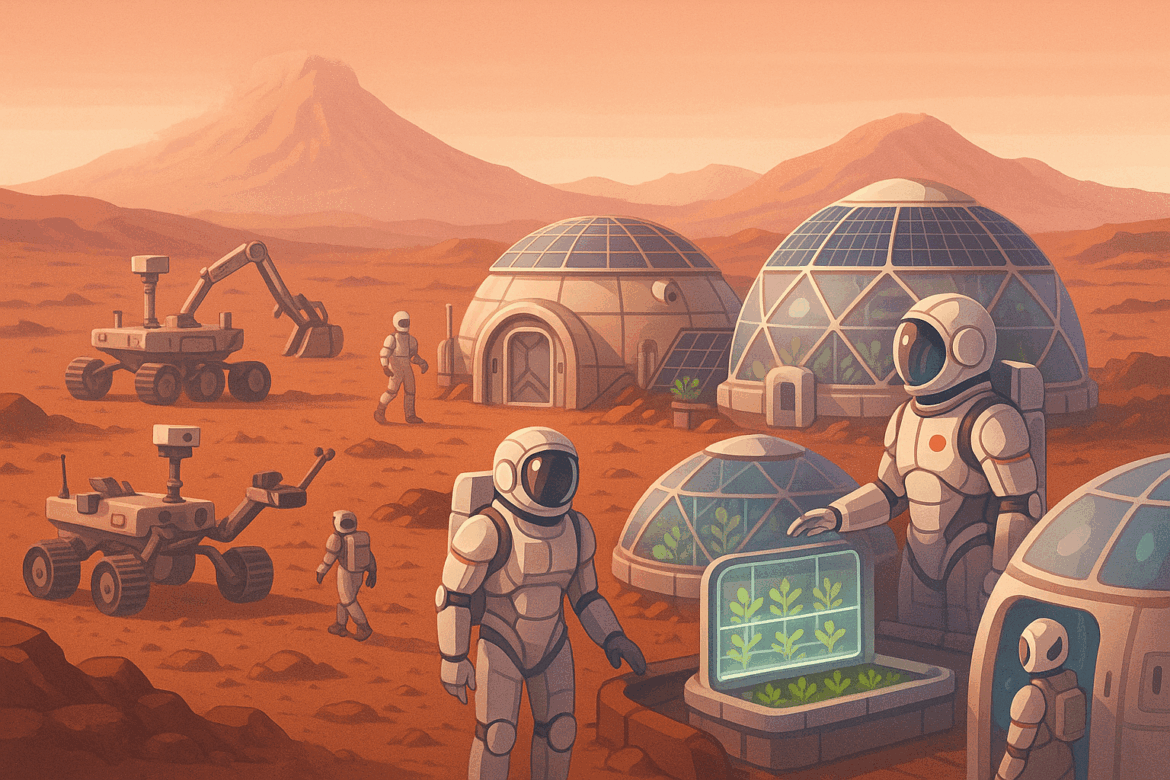The concept of human settlement on Mars is no longer confined to science fiction. Thanks to significant progress in space engineering, we now have serious plans to construct habitats, life-support systems, and long-lasting infrastructure on the Red Planet.
However, living on Mars presents some extreme hurdles. From tough environments to scarce resources, engineers must reconsider everything—from construction materials to food production. Let’s dive into how space engineering is leading the way for life on Mars.
🌍 Why Mars?
Mars stands out as one of the most Earth-like planets in our solar system. It has:
- A 24.6-hour day (just like Earth)
- Ice caps at the poles with frozen water
- The chance of water underground
- A surface that people and machines can walk on
But it has problems too:
- Very thin air (carbon dioxide)
- Temperatures that go below -100°C
- High levels of radiation because it lacks a magnetic field
This is where space engineering steps in—to create systems that help humans live and grow in this setting.
🏠 Creating Homes on Mars
To live on Mars, we need shelters that shield us from cold, radiation, and dust storms. Engineers are looking into:
1. 3D-Printed Homes
Using Martian soil (called regolith), robots have the ability to 3D-print structures—this saves the cost to transport materials from Earth.
2. Inflatable Modules
Living spaces that are lightweight and expandable can be transported in a compact form and inflated once on Mars.
3. Underground Bunkers
Living below the surface can shield astronauts from harmful radiation and extreme weather.
🌬 Life Support Systems: Air, Water, and Food
To survive on Mars, astronauts need systems to create and recycle oxygen, water, and food.
Oxygen:
NASA’s MOXIE experiment has already shown it’s possible to turn Martian CO₂ into oxygen. Future missions will make this process bigger.
Water:
Engineers plan to get water from ice below the surface or reuse all wastewater similar to practices on the International Space Station (ISS).
Food:
Mars missions will include hydroponic farms—growing food without soil using LED lights and reused water.
🔋 Providing Energy for a Martian Settlement
Without a power grid on Mars how can we create energy?
Solar Power:
The most promising method—solar panels can work in many places but need regular cleaning because of dust.
Nuclear Power:
NASA and other agencies are working on small nuclear reactors that can supply steady energy no matter the weather.
🚀 Moving People and Cargo
Reaching Mars poses a huge engineering test by itself. SpaceX and similar firms are creating rockets you can use again to transport astronauts and supplies.
After landing, engineers will require:
- Rovers and drones to transport materials
- Landing systems that can work in Mars’ thin air
- Return vehicles to bring astronauts back to Earth without harm
🧠 Clever Tech and Automation
Due to the lag in messages between Mars and Earth (up to 24 minutes), robots and systems on Mars must work on their own.
AI will help to:
- Keep habitats running
- Watch oxygen and water systems
- Direct drones and rovers
- Help in emergencies
🔮 Future of Mars Colonization
We’re just getting started, but we’re laying the groundwork. In the next 20 years, we might see:
- The first long-term outpost on Mars
- Machines constructing living spaces before people show up
- Countries working together on trips between planets
- Fresh insights about Mars’ past—and if anything ever lived there
